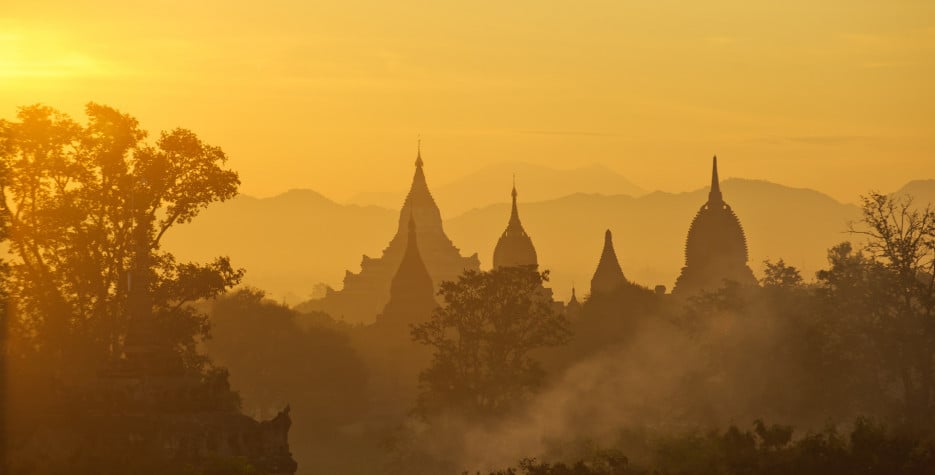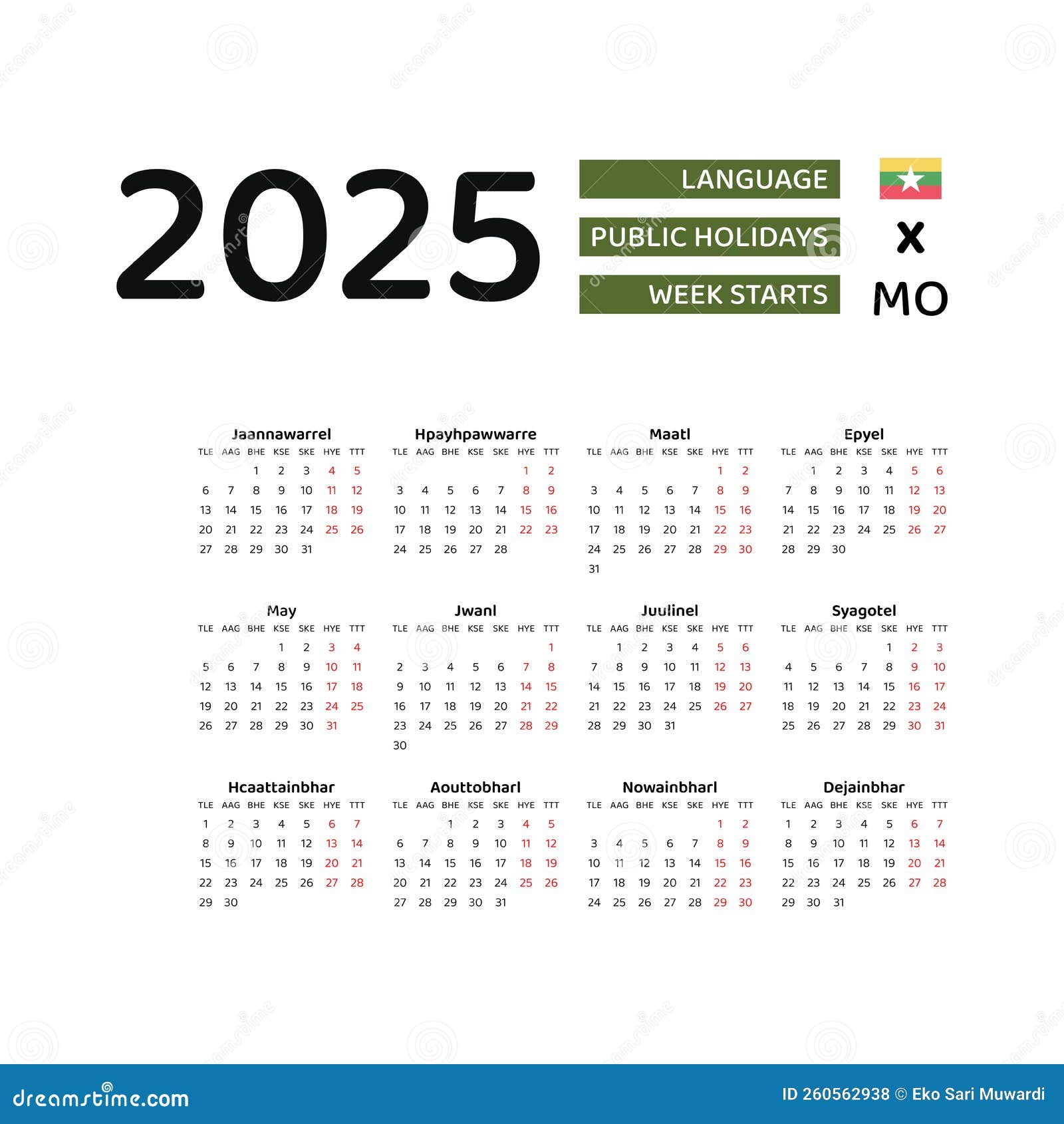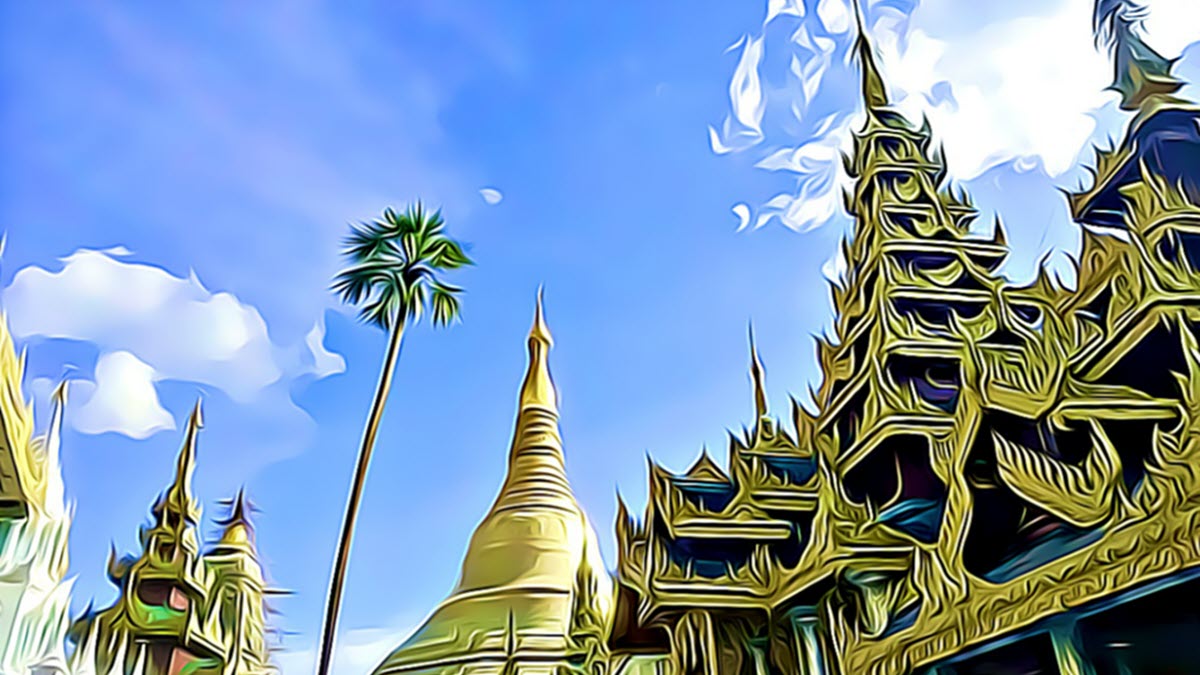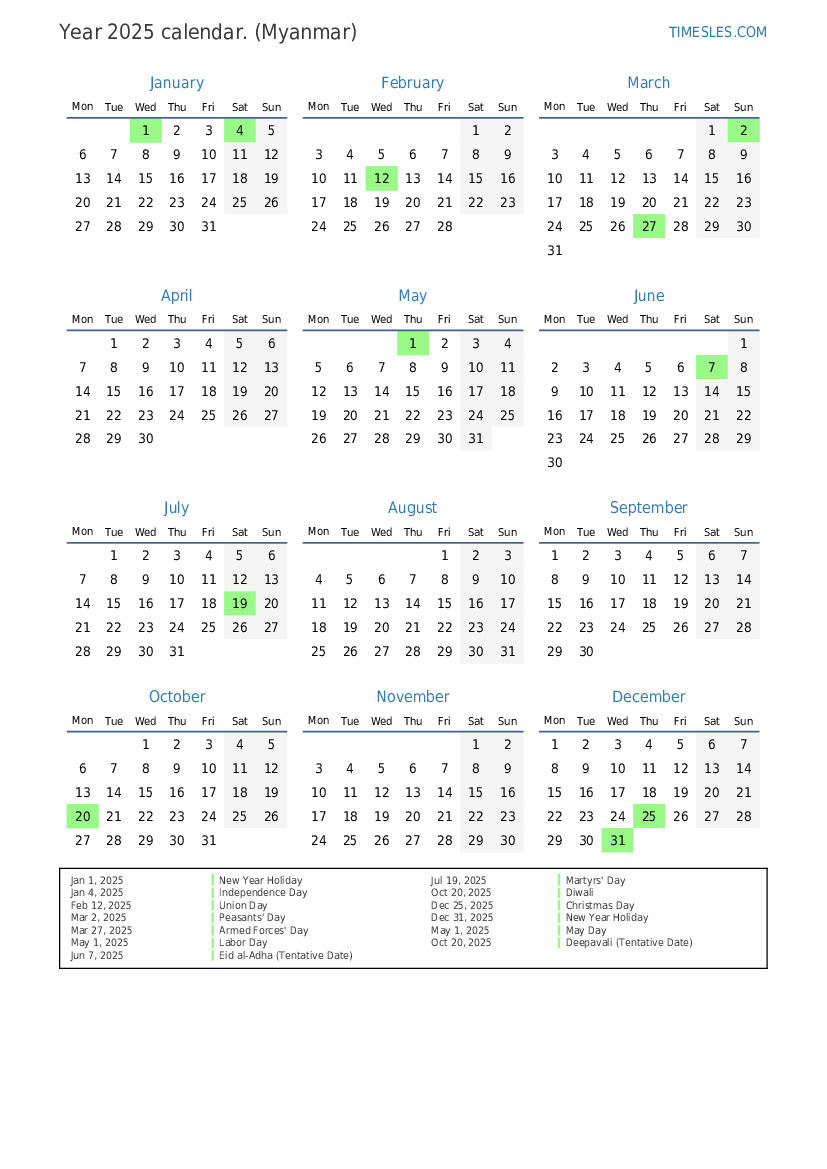Navigating Myanmar’s Festivities in 2025: A Comprehensive Guide
Related Articles: Navigating Myanmar’s Festivities in 2025: A Comprehensive Guide
Introduction
In this auspicious occasion, we are delighted to delve into the intriguing topic related to Navigating Myanmar’s Festivities in 2025: A Comprehensive Guide. Let’s weave interesting information and offer fresh perspectives to the readers.
Table of Content
Navigating Myanmar’s Festivities in 2025: A Comprehensive Guide
Myanmar, a nation steeped in ancient traditions and vibrant culture, offers a captivating tapestry of festivals throughout the year. 2025 promises to be a year brimming with opportunities to immerse oneself in the rich heritage of this Southeast Asian gem. This guide delves into the key holidays observed in Myanmar, providing insights into their significance, celebrations, and the unique experiences they offer to visitors.
A Glimpse into Myanmar’s Festive Calendar:
Myanmar’s holidays are intricately woven into its history, religion, and societal fabric. While some festivals are celebrated nationwide, others are specific to particular regions, offering a diverse panorama of cultural expressions. Here are some of the prominent holidays anticipated in 2025:
1. Thingyan (Myanmar New Year):
This joyous festival, usually falling in mid-April, is the most significant holiday in Myanmar. It marks the traditional New Year and is celebrated with a week-long extravaganza of water splashing, religious ceremonies, and family gatherings.
- Significance: Thingyan symbolizes the cleansing of the past and the welcoming of the new year with hope and renewal.
- Celebrations: The festival is characterized by water throwing, a playful tradition where people douse each other with water, symbolizing the washing away of negativity. Temples are adorned with elaborate decorations, and traditional foods are enjoyed.
- Experiences: Visitors can participate in the water splashing, witness the vibrant processions, and immerse themselves in the celebratory atmosphere.
2. Tazaungdaing Festival (Festival of Lights):
This festival, celebrated in October, marks the full moon of the Tazaungmon (eighth) lunar month. It is a time of religious devotion and festivities.
- Significance: Tazaungdaing commemorates the Buddha’s return to earth after his visit to the celestial realm.
- Celebrations: The festival is marked by the lighting of countless oil lamps and candles, illuminating homes, pagodas, and streets. People gather at temples, offering prayers and participating in traditional performances.
- Experiences: Visitors can witness the breathtaking spectacle of illuminated pagodas, enjoy the festive atmosphere, and participate in the candle-lighting ceremony.
3. Full Moon Days:
Myanmar observes eight full moon days throughout the year, each holding special religious significance. These days are marked by meditation, prayer, and acts of charity.
- Significance: Full moon days are considered auspicious and offer opportunities for spiritual reflection and renewal.
- Celebrations: People visit temples, offer prayers, and participate in religious ceremonies.
- Experiences: Visitors can observe the serene atmosphere at temples, participate in meditation sessions, and learn about the Buddhist traditions.
4. Other Notable Holidays:
- Kason Full Moon Day: This day commemorates the Buddha’s birth, enlightenment, and Parinirvana (death).
- Waso Full Moon Day: This day marks the beginning of the Buddhist Lent, a period of spiritual introspection and retreat.
- Thadingyut Full Moon Day: This day celebrates the Buddha’s return to earth after his visit to the celestial realm.
- Bodhi Day: This day commemorates the Buddha’s enlightenment under the Bodhi tree.
Beyond the Festivities: A Deeper Dive into Myanmar’s Cultural Landscape
Understanding the context behind Myanmar’s holidays provides a deeper appreciation for the country’s rich cultural heritage:
- Religion and Tradition: Buddhism plays a central role in Myanmar’s cultural landscape, shaping its festivals and rituals. The holidays are deeply rooted in Buddhist beliefs and provide opportunities for spiritual growth and community bonding.
- Art and Crafts: The festivals are adorned with traditional art forms, from elaborate decorations to colorful costumes. Visitors can witness the intricate craftsmanship and artistry that are a hallmark of Myanmar’s cultural heritage.
- Cuisine and Hospitality: Myanmar’s cuisine is a vibrant reflection of its diverse culture. During festivals, traditional dishes are prepared, showcasing the culinary skills and hospitality of the people.
- Local Customs and Etiquette: Respecting local customs and etiquette is crucial when participating in festivals. Learning about the traditions and showing respect for the beliefs and practices will enhance the experience.
FAQs about Myanmar’s Holidays:
-
Q: What are the best times to visit Myanmar for experiencing festivals?
- A: The best time to visit for festivals depends on your preferences. Thingyan (April) offers a vibrant and lively experience, while Tazaungdaing (October) provides a more serene and reflective atmosphere.
-
Q: Are there any specific clothing guidelines for festivals?
- A: While there are no strict dress codes, it is advisable to dress modestly, especially when visiting temples.
-
Q: What are some recommended foods to try during festivals?
- A: Traditional dishes like mohinga (fish noodle soup), tea leaf salad, and Shan noodles are popular choices.
-
Q: Are there any safety concerns during festivals?
- A: While festivals are generally safe, it is advisable to be aware of your surroundings and take precautions against pickpocketing.
Tips for Experiencing Myanmar’s Holidays:
- Plan Ahead: Book accommodations and flights well in advance, especially during peak festival seasons.
- Respect Local Customs: Dress modestly, avoid loud or disruptive behavior, and be respectful of religious sites.
- Engage with Locals: Interact with locals, ask questions, and learn about their traditions and beliefs.
- Capture Memories: Take photos and videos to document your experiences, but be mindful of privacy and cultural sensitivities.
- Be Open to New Experiences: Embrace the unique and vibrant aspects of Myanmar’s festivals, and allow yourself to be immersed in the culture.
Conclusion:
Myanmar’s holidays offer a unique and enriching experience, providing a window into the country’s vibrant culture, history, and traditions. Whether you seek the joyous celebrations of Thingyan or the serene atmosphere of Tazaungdaing, these festivals provide opportunities to connect with the heart of Myanmar and create lasting memories. By respecting local customs, engaging with the community, and embracing the spirit of these celebrations, visitors can truly appreciate the beauty and richness of Myanmar’s cultural heritage.








Closure
Thus, we hope this article has provided valuable insights into Navigating Myanmar’s Festivities in 2025: A Comprehensive Guide. We hope you find this article informative and beneficial. See you in our next article!